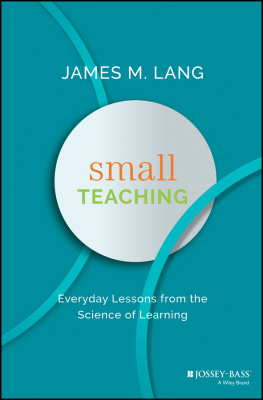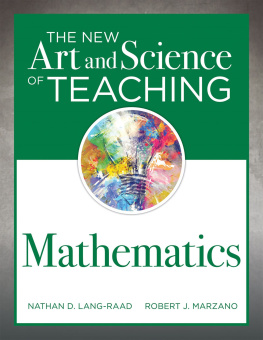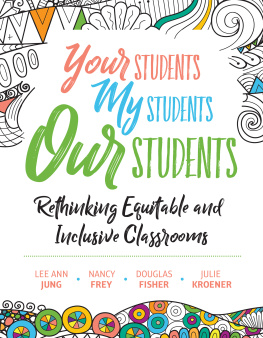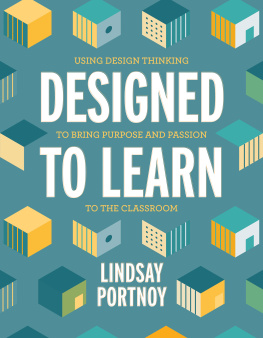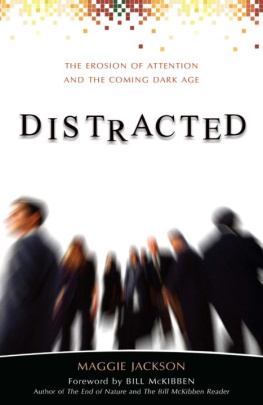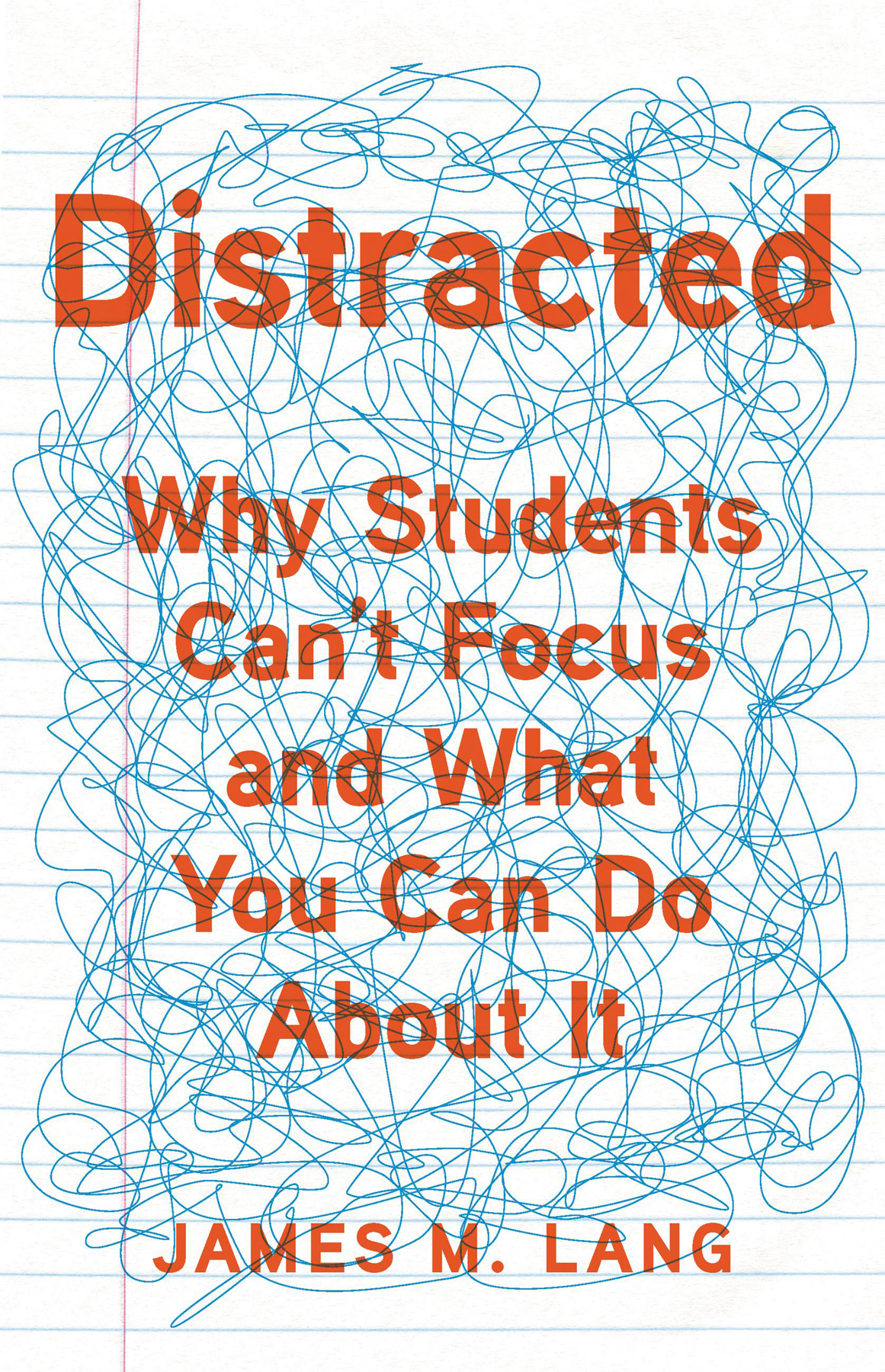
Copyright 2020 by James M. Lang
Cover design by Chin-Yee Lai
Cover image Binik / Shutterstock.com; Shawn Hempel / Shutterstock.com
Cover copyright 2020 Hachette Book Group, Inc.
Hachette Book Group supports the right to free expression and the value of copyright. The purpose of copyright is to encourage writers and artists to produce the creative works that enrich our culture.
The scanning, uploading, and distribution of this book without permission is a theft of the authors intellectual property. If you would like permission to use material from the book (other than for review purposes), please contact permissions@hbgusa.com. Thank you for your support of the authors rights.
Basic Books
Hachette Book Group
1290 Avenue of the Americas, New York, NY 10104
www.basicbooks.com
First Edition: November 2020
Published by Basic Books, an imprint of Perseus Books, LLC, a subsidiary of Hachette Book Group, Inc. The Basic Books name and logo is a trademark of the Hachette Book Group.
The Hachette Speakers Bureau provides a wide range of authors for speaking events. To find out more, go to www.hachettespeakersbureau.com or call (866) 376-6591.
The publisher is not responsible for websites (or their content) that are not owned by the publisher.
Library of Congress Cataloging-in-Publication Data
Names: Lang, James M., author.
Title: Distracted : why students cant focus and what you can do about it / James M. Lang.
Description: First edition. | New York : Basic Books, 2020. | Includes bibliographical references and index.
Identifiers: LCCN 2020015825 | ISBN 9781541699809 (hardcover) | ISBN 9781541699816 (ebook)
Subjects: LCSH: Motivation in education. | Attention in adolescence. | Interest (Psychology) | Effective teaching. | Classroom environment. | Active learning. | Problem-based learning. | Student participation in curriculum planning. | Cognitive neuroscience.
Classification: LCC LB1065 .L348 2020 | DDC 370.15/4dc23
LC record available at https://lccn.loc.gov/2020015825
ISBNs: 978-1-5416-9980-9 (hardcover), 978-1-5416-9981-6 (ebook)
E3-20200917-JV-NF-ORI
Praise for
Distracted
This book will change how you think about education. Distracted takes us on a phenomenal ride into a much misunderstood aspect of human learning and finally into the refreshing light that science, literature, philosophy, and history bring. Anyone who cares about learningtheir own or anyone elsesshould take this journey.
Ken Bain, author of What the Best College Teachers Do
Langs books have held a place of honor in my library of parenting and education books, and Distracted will, too. It is a delightful mash-up of the research and history on attention and learning. I adore this book and will be recommending it to parents and teachers.
Jessica Lahey, author of The Gift of Failure
Distraction didnt begin with digital devicesand it wont end by banning them from classrooms. The human mind has always been a wandering mind. James Lang offers a fresh and hopeful analysis of this enduring problem. This book is an essential primer for helping students learn to cultivate attention.
Daniel H. Pink, author of When, Drive, and A Whole New Mind
Distracted gives teachers a powerful way to address one of the knottiest problems they face. Lang is an empathetic and knowledgeable guide, and reading this book feels like being in the middle of a conversation with dedicated, supportive, and enthusiastic colleagues. Whether youre new to the classroom or a veteran teacher, Distracted is a must-read.
Kevin Gannon, Grand View University
In order for learning to happen, we need our students to be fully present in the classroomand we need to be fully present for them as well. This book tells us why we must actively cultivate our students ability to focus, weaving together compelling and unexpected approaches for addressing the age-old problem of distracted students.
Michelle D. Miller, Northern Arizona University
Distracted is a must-read for every classroom teacher. Lang makes a compelling argument that attention is an achievement and that we should be cultivating attention renewal rather than preventing distractions. He presents practical classroom activities for fostering curiosity and communitywith the research to back them up. Candid insights on effective laptop policies, inviting students into the conversation, and the role of assessments make Distracted an invaluable resource that will change how youand your studentsthink about learning.
Pooja K. Agarwal, PhD, Cognitive Scientist and Author, Powerful Teaching
Attention is a finite and precious resource we are always in danger of squandering. Distracted will help teachers and students use it to nourish mind and soul.
Ian Leslie, author of Curious
Attention is an essential part of the learning process. Yet, to those who teach, attention can feel elusive and fleeting. In Distracted, James Lang helps us navigate the challenges presented by technologies that bring both a world of information, and the potential for endless distractions, to students fingertips. Lang encourages us to rethink our attempts to ban anything that may distract learners, and instead, to focus on practices that gain attention.
Bonni Stachowiak, Teaching in Higher Ed
Distracted proves once and for all that the question we face today is not How do we make students stop looking at their phones during class? but rather How can we help students find meaning during class? Packed with specific, easy-to-implement pedagogical strategies for seizing and maintaining students academic attention, Distracted is an eminently practical guide for increasing authentic student learning in any subject. It will transform the way we think about teaching and learning in higher education.
Jessamyn Neuhaus, SUNY Plattsburgh
For my father,
who has taught me to pay attention to what matters.
Instructions for living a life:
Pay attention.
Be astonished.
Tell about it.
M ARY O LIVER , S OMETIMES
I FINISHED WRITING this book in February of 2020, one month before the COVID-19 pandemic erupted in the United States. While the book wound its way through the production process, teachers around the world were shifting their courses online on very short notice. Having never taught online before, I had ten days to transform my British literature survey course, which met three times per week in a physical classroom, to one in which our every encounter would be mediated by screens. During those ten day I learned how to record video lectures for my students, write productive prompts for our discussion board, conduct group and individual Zoom sessions, and assign and evaluate student work entirely online. Much to my surprise, I found the exploration of these new teaching practices invigorating. I had been curious about online teaching for several years, wondering how it would compare to the traditional classroom experience. Some of the teaching practices I experimented with in my online course proved very effective for my students; I will continue to use them when I return to the face-to-face classroom.
I suspect many traditional high school and college courses, the kind that meet in physical classrooms filled with human bodies, will undergo a similar transformation in the post-pandemic world. Our courses will be enriched by our newfound familiarity with tech tools that have been tested and proven effective by online teachers for the past decade or two. As a consequence of this, the devices that we like to blame for distractibility will assume an even more important role in the lives of educators and students. Attempts to remove them from our learning spaces will become increasingly challenging in this world of blended learning environments, in which students are learning through both their devices and the community setting of the classroom. But whatever differences might emerge in the educational world as a result of the COVID-19 pandemic, the core challenge that this book addresses remains exactly the same as prior to the pandemic, and as it will remain for as long as humans teach other humans through formal schooling: cultivating the attention of students in support of their learning.


